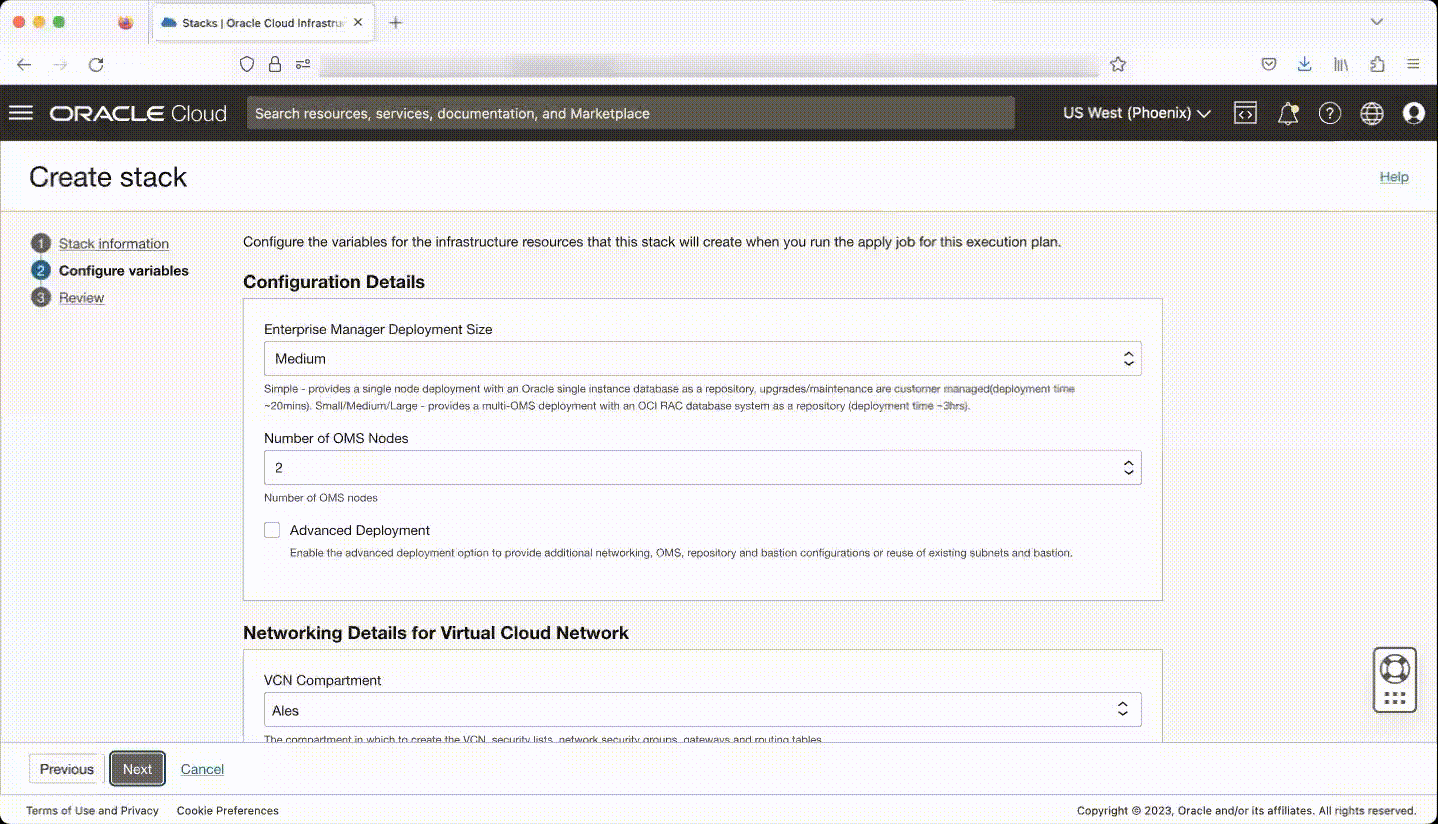Oracle Enterprise Manager (EM) 13.5 Release Update 15 (13.5.0.15) is now available as an app on Oracle Cloud Marketplace and it’s available in all regions. This enables you to try out the latest version without having to install it on your on-premises hardware. You start working with a fully configured EM instance with minimal configuration effort.
Try the latest Oracle EM 13.5.0.15 capabilities without installing and configuring
Oracle Enterprise Manager provides complete application-to-disk management for the Oracle stack, especially Oracle database environments. EM app for OCI Marketplace allows you to try a new release of EM without having to initiate an on-premises IT project, with just a few clicks.
Oracle Enterprise Manager 13.5 Release Update 15 image includes:
- Oracle Resource Manager Stack version 2.4.1
- The Oracle Management Repository (OMR) uses Database 19c Release Update 19
- TDE (Transparent Data Encryption) is enabled out-of-box, ensuring data safety on the Cloud
- Data Guard support for the repository database
- WebLogic Server 12.2.1.4 with April 2023 CPU
- Oracle Enterprise Manager 13c Release 5 Update 15 (13.5.0.15), also referred to as 13.5 RU15
- Java Development Kit (JDK) 8 Update 371
- Operating System: Oracle Linux (OL) 8.7
- Opatch updated to version 13.9.4.2.12 version
- Supports both single-node (collapsed install) and multi-node configurations using an Oracle Cloud Infrastructure Resource Manager Stack
- Enterprise Manager Diagnostics Kit Version: 22.11.22
To get to the new image, sign in to OCI, and from the OCI main menu navigate to Marketplace. Search for “Oracle Enterprise Manager” and click on Oracle Enterprise Manager 13.5-RU15 – Enterprise Cloud Management solution. Review the Oracle standard terms and restrictions and click on ‘Launch Stack’ or directly use the cloud listing URL and click on ‘Get App’


What’s new in the 13.5 RU15 image update?
We have introduced the new features listed below as part of the EM13.5 RU15 image deployment on Oracle Cloud, for Single and Multi-node deployment types.
Reusing existing subnets and bastion instance
In the realm of network architecture, reusing existing subnets is a strategic move aimed at optimizing network resources, enhancing efficiency, and minimizing complexities. Rather than creating new subnets, this approach involves repurposing and extending the life of previously established subnets. Similarly, to optimize the infrastructure resources, you can repurpose your existing bastion instance for deploying Enterprise Manager on Oracle Cloud.
Here is an example of how to quickly provision a ‘Simple’ Deployment type which is a ‘Single Node’ installation of EM on OCI. This is a Single node configuration, with the instance (EM and repository database) placed in an existing Private subnet and reusing an existing Bastion host.
In this case, you have an existing VCN with at least one private subnet to reuse for deployment. To allow access to the instances in a private subnet, you can reuse an existing bastion host. In addition, you need to have Internet and Service gateways for connections between OCI services.
At a high level, you can navigate to the Marketplace listing, or navigate to OCI console Marketplace, search for Oracle Enterprise Manager, and click on Launch Stack.
- In the configuration details, select Simple in Enterprise Manager Deployment Size and check Advanced Deployment to allow the reuse of existing VCN and subnets.
- In the section Networking Details for Virtual Cloud Network, pick your Compartment. In Virtual Cloud Network Strategy, select Use Existing VCN and in Existing VCN select from the drop-down menu your existing VCN.Private subnet.
- In the section Networking Details for Enterprise Manager and Oracle Database Subnet, pick the compartment of your existing private subnet. Then, in EM/DB Subnet Strategy, select Use Existing EM/DB subnet. Under EM/DB Subnet Type, choose Use Private Subnet and, finally, in Existing Private EM/DB subnet select from the drop-down menu.

Figure 3: Single node deployment using existing VCN and existing private subnet
- In the last section, the Bastion Host Details, depending on your Bastion Strategy you have two options: Create a New Bastion host or Use an Existing Bastion host.
Bastion SetupThe bastion host allows secure access to resources that do not have public endpoints and require strict resource access controls. If you do not have an existing Bastion host, it can be created during the provisioning of Enterprise Manager. A Bastion instance is always needed when the EM/DB subnet is private, for both single-node setups and all multi-node setups. A Bastion is not needed only in a single node setup with a public EM/DB subnet. When you are already reusing an existing Bastion instance, note that the Bastion public subnet has to be different from the Load Balancer public subnet.
How do you use an existing Bastion instance for deployment?
To use an existing Bastion instance for provisioning Enterprise Manager on Oracle Cloud, first, select the compartment where the Bastion instance exists. From the instance details, copy the Bastion OCID. To enable a secure way to access the existing Bastion instance you need a private SSH key, which will be securely stored as a Secret in OCI Vault. Follow the Oracle Cloud documentation Creating a Vault and then Creating a Secret in a Vault for details. Next, in the stack, select the compartment where your bastion secret is then in bastion secret, from the drop-down menu, select your bastion secret. The secret version number is not important; the latest secret version is referenced automatically. For the bastion public subnet, select the subnet where the bastion exists, and it must be a subnet that is part of your existing VCN.

Get started today!
There are many other configuration options possible, be sure to choose the one that best fits your needs. See the comprehensive installation and configuration guide, Setting Up Oracle Enterprise Manager 13.5 on Oracle Cloud Infrastructure, for more details. The total time to complete the setup is approximately 20 minutes for a Single node and approximately 3 hours for a Multi-Node deployment. We hope you leverage this capability to quickly and easily deploy Oracle Enterprise Manager 13.5 in Oracle Cloud!
Follow the appropriate Oracle Enterprise Manager licensing applicable to your environment.
Resources
Set up Enterprise Manager 13.5 on Oracle Cloud Infrastructure
